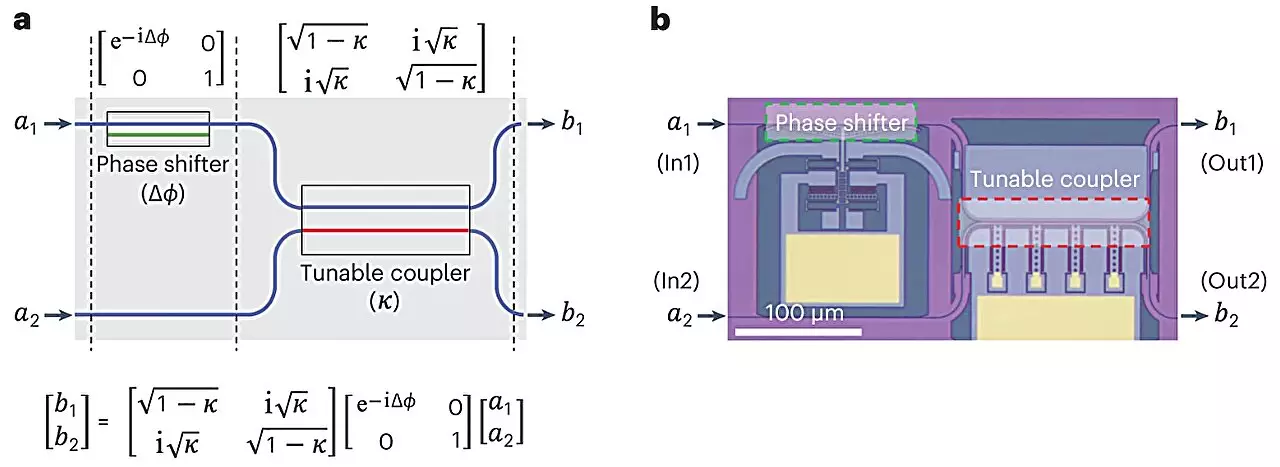The field of programmable photonic integrated circuits (PPICs) continues to make significant strides in processing light waves for computation, sensing, and signaling. Researchers at the Daegu Gyeongbuk Institute of Science and Technology (DGIST) in South Korea, alongside collaborators from the Korea Advanced Institute of Science and Technology (KAIST), have achieved a major breakthrough by incorporating microelectromechanical systems (MEMS) into PPICs. Published in the prestigious journal Nature Photonics, their research demonstrates the potential for PPICs to outperform conventional supercomputers in terms of speed, efficiency, and parallel computing capabilities. In addition to these advantages, the reduction in power consumption and size of PPICs presents opportunities for advancements in artificial intelligence, neural networks, quantum computing, and communications.
The integration of silicon-based photonic MEMS technologies onto PPIC chips with extraordinarily low power requirements marks a groundbreaking achievement by the DGIST team. Notably, they have managed to reduce power consumption to femtowatt levels, which represents a remarkable advancement when compared to previous state-of-the-art systems. Moreover, these innovative systems can be implemented on chips that are up to five times smaller than existing options, further optimizing the overall size and efficiency of PPICs.
To achieve such a significant reduction in power requirements, the researchers moved away from conventional “thermo-optic” systems that rely on temperature changes. Instead, electrostatic forces, which encompass the attractions and repulsions between fluctuating electric charges, power the necessary tiny mechanical movements. By leveraging these electrostatic forces, the components integrated onto the PPIC chips can effectively manipulate light wave phases and control the coupling between parallel waveguides.
Building PPICs that outperform conventional computing systems requires attention to two fundamental aspects: controlling the phase of light waves and managing the coupling between waveguides. The DGIST team has successfully integrated micromechanical “actuators” onto their chips, which act as switches and enable the programmability of the integrated circuit. By combining these key features and components, the researchers have laid a strong foundation for the development of advanced PPICs.
The use of silicon-based parts and the compatibility with conventional silicon wafer technology are instrumental in paving the way for large-scale production of photonic chips. This compatibility facilitates the commercialization of PPICs, making them viable for various applications in modern technology. The DGIST team now aims to refine their technology and bring a photonic computer to market that surpasses conventional electronic computers in fields such as artificial intelligence, advanced image processing, and high-bandwidth data transmission.
The recent breakthrough achieved by researchers at DGIST and KAIST in incorporating microelectromechanical systems into PPICs is a significant development in the field of programmable photonic integrated circuits. This advancement not only demonstrates the potential for PPICs to outperform conventional supercomputers but also highlights the possibilities for reducing power consumption and size. As efforts to refine and commercialize this technology continue, the impact on various industries, including artificial intelligence, image processing, and data transmission, is expected to be substantial. With continued dedication and innovation, programmable photonic integrated circuits have the potential to revolutionize computational technology and transform modern technology as we know it.


Leave a Reply